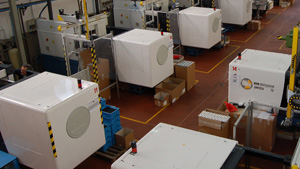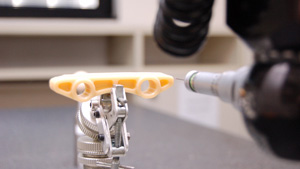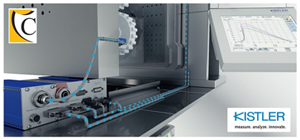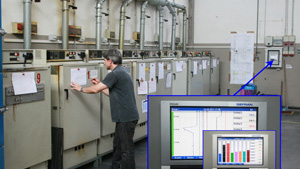Quality
Testing
Quality control has traditional type bench instruments and modern measuring devices such as coordinate measuring machines and vision measuring machines. Thanks to them and to the specialization of our engineers we are able to periodically check the critical dimensions of each part. On request, capability studies (Cp - Cpk) can be performed thanks to SPC (Statistical Process Control) techniques. Parts can also be compared to mathematical models through the use of measurement software.
We have dedicated equipment for checking U.S. welding through peel tests, both extended and strained.
In addition, we are able to carry out moisture analysis of the polymeric raw material and of the moulded parts (Sartorius MA100 moisture analyser), as well as to check the specific weight (Sartorius ME254 S electronic analytical weighing machine), both on the raw material and on the finished parts. If more in-depth investigations are necessary, we cooperate with external designated laboratories specialized in specific tests on plastic, such as DSC, viscosity measurement in solution, TGA, Melt Flow Index and so on.
Quality Assurance
Our Company Quality System is certified according to the UNI EN ISO 9001 and UNI EN ISO 14001 standards by TUV SUD.
We are also accredited for the production of items intended for the food industry, in compliance with EC Regulation 1935/2004 (MOCA).
Monitoring
As an additional controlling tool, Cattini has adopted cavity pressure sensors, choosing Kistler products.
Thanks to CoMo Injection unit, these sensors detect the correct pressure in the cavity and allow, in case of problems, to isolate the single
beat, in order to ensure a more stable process and a better quality.
Once the ideal pressure curve is defined, it is possible to correlate the findings to the part's dimensions and
thus be certain that, if the curve is repeated, the parts are uniform.
As to production flexibility, in addition, this information is very useful when the mould is transferred to a
different moulding machine. Once the curve is defined, it is sufficient to repeat it on different machines to
achieve the same dimensional results.
Tools and equipment maintenance
Maintenance is a company procedure, aiming at carrying out a prior intervention, so that the likelihood of failure and/or degradation of a production unity operation is reduced. Maintenance is managed by a specific scheduler software that part-time alerts the tooling staff.
Our tools and equipment are covered by All risks insurance.
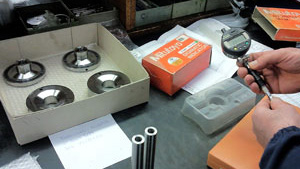
Heat Treatments (Post-curing)
Our company has a battery of Votsch and Heraeus ovens, aimed at performing the post-curing treatments which are necessary for Torlon (PAI) imidization. Ovens are used also for the treatment of carbon charged PEEK.
POST CURE
The parts obtained from the injection molding of Torlon (PAI) must undergo a thermal process known as POST CURING. This step is necessary to achieve the properties listed in the Torlon PAI Design Manual of Solvayplastics. Uncured or inadequately cured parts will not perform at the expected levels. The post cure process consists in placing moulded parts in fan ovens and thermally treating them, by increasing the temperature at different intervals. The standard cure cycle is suitable for parts with a maximum cross-sectional thickness of 7.6 mm (0.3 inch). Cattini can determine the best post cure schedule for any application and check that moulded parts are fully cured.




